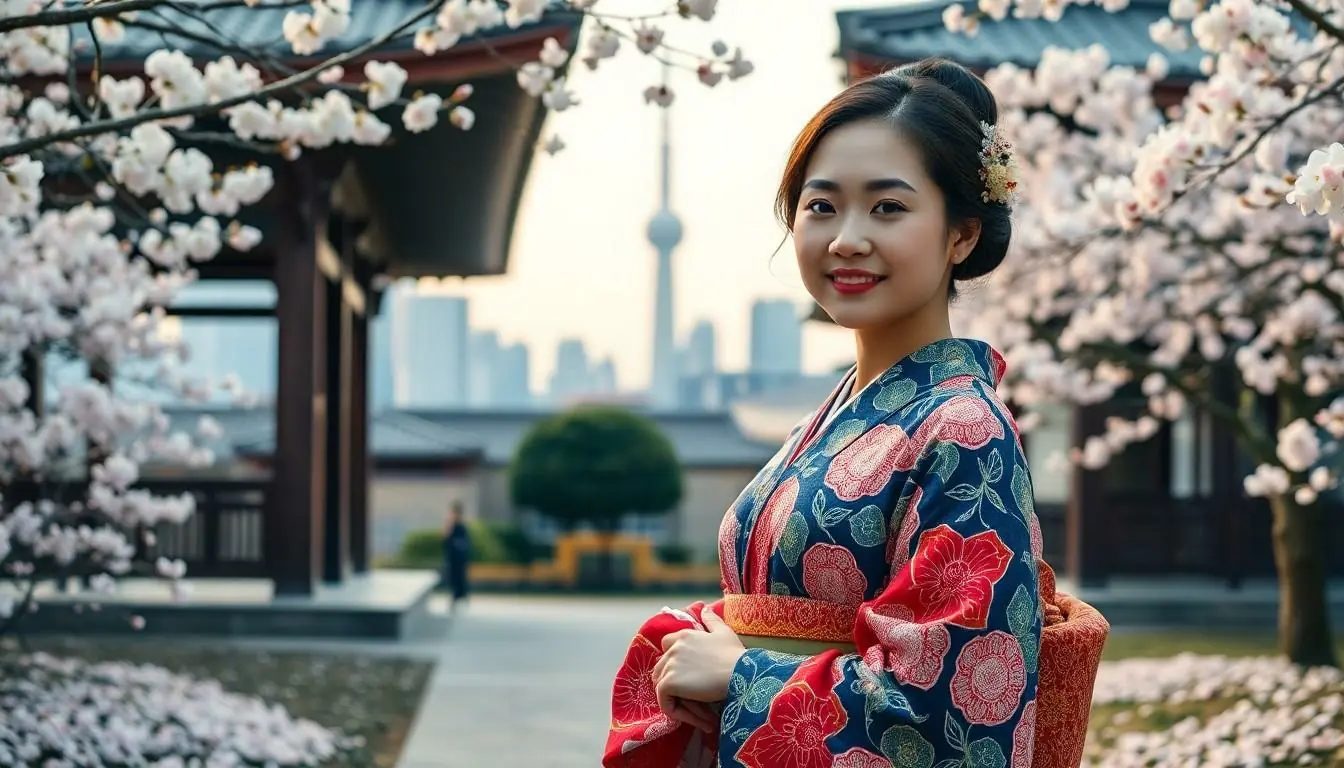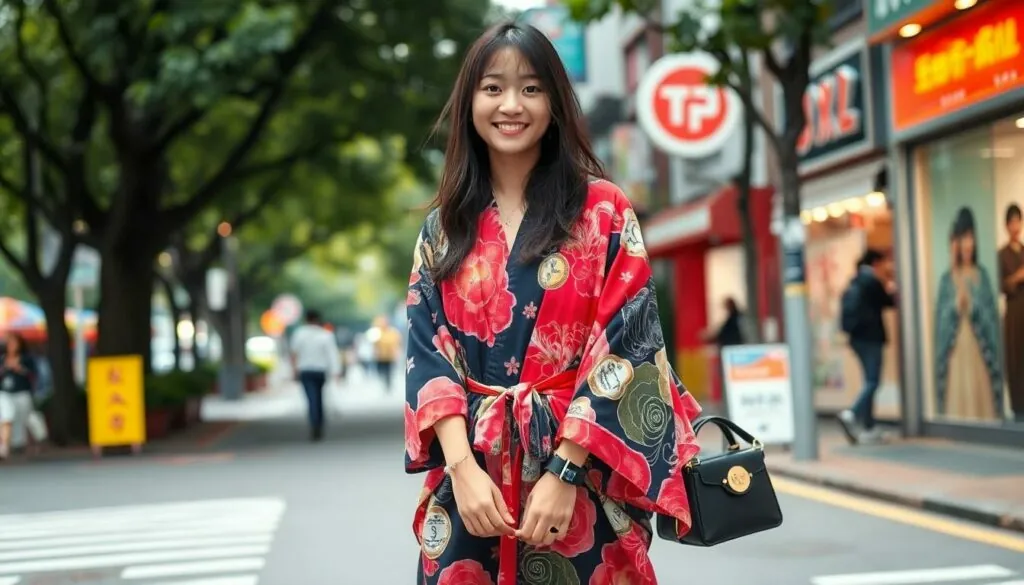Japanese women’s fashion is a vibrant tapestry woven from tradition and modernity, where every outfit tells a story. From the elegant grace of kimono to the quirky charm of street style, it’s a world where creativity knows no bounds. Imagine stepping into a realm where fashion is not just about clothes but an expression of identity and culture.
Table of Contents
ToggleOverview of Japanese Women’s Fashion
Japanese women’s fashion reflects a unique combination of tradition and modernity. This fashion scene showcases a variety of styles, from the elegant kimono to modern streetwear. Colors, patterns, and silhouettes highlight cultural heritage and contemporary trends.
Kimono represents timeless beauty, often adorned with intricate patterns and bright colors. Many wear them during cultural events, emphasizing grace and elegance. Similarly, contemporary styles incorporate Japanese aesthetics, maintaining a balance between innovation and tradition.
Tokyo serves as a fashion hub, with neighborhoods like Harajuku known for vibrant street styles. Influencers and designers often blend DIY elements with high fashion, creating distinctive looks. Pop culture significantly influences trends, as seen in collaborations with anime and manga.
Fashion weeks in Japan present numerous opportunities for designers to showcase their innovative creations. Each season brings fresh ideas, reflecting both global and local inspirations. Sustainability is becoming increasingly important, leading to the rise of eco-friendly brands.
Shopping districts like Shibuya and Ginza offer diverse choices, ranging from luxury boutiques to thrift stores. Women enjoy exploring various options, expressing their unique tastes. Social media platforms enable sharing and discovery of new trends, influencing fashion choices.
Accessories play a crucial role in completing outfits. Stylish bags, statement shoes, and unique jewelry enhance personal style while showcasing individuality. Ultimately, Japanese women’s fashion continues to evolve, merging history with modern influences and capturing the essence of contemporary culture.
Historical Influences

Japanese women’s fashion has deep roots, shaped by a rich tapestry of historical influences. The transition from traditional attire to contemporary styles illustrates cultural evolution.
Traditional Clothing
Kimonos serve as iconic symbols of Japan’s heritage, featuring intricate designs and vibrant colors. Worn during special occasions, these garments reflect regional variations in style and fabric. Obi, the elaborate sashes that accompany kimonos, add layers of richness to the outfit. The layering technique, known as “wa”, showcases the skill of artisans who craft these beautiful pieces. Accessories like obijime and kanzashi further enhance the traditional look, solidifying the kimono’s place in cultural expression.
Modern Adaptations
Tokyo’s fashion scene embraces innovation, blending traditional elements with modern aesthetics. Designers reinterpret kimonos by incorporating contemporary fabrics and silhouettes, creating hybrid styles suitable for everyday wear. Streetwear heavily influences this adaptation, with tailored kimonos matched with sneakers or bold accessories. Fashion enthusiasts often experiment by mixing vintage kimono pieces with urban attire, showcasing their individuality. This fusion revitalizes traditional clothing, making it relevant for younger generations and ensuring its ongoing evolution in women’s fashion.
Key Styles in Japanese Women’s Fashion
Japanese women’s fashion features diverse styles that reflect cultural nuances and contemporary trends. Three significant styles dominate the scene.
Street Fashion
Street fashion thrives in urban areas, particularly in districts like Harajuku. Influencers showcase eclectic outfits that often combine DIY elements with high-end pieces. Bright colors and bold patterns define this style, capturing the vibrant energy of Japanese youth culture. Layering techniques allow for personal expression, as individuals mix vintage garments with modern accessories. This fashion genre often draws inspiration from pop culture, including anime and manga references that resonate with fans. Trendsetters readily adopt unique footwear and statement bags, amplifying their individual looks while pushing the boundaries of conventional fashion.
High Fashion
High fashion in Japan emphasizes craftsmanship and artistry, often seen in luxury brands and designer collections. Renowned designers regularly unveil their work during Tokyo Fashion Week, showcasing innovative designs that blend tradition with modern aesthetics. Fabrics and silhouettes evolve, highlighting the meticulous attention to detail typical of Japanese fashion. Couture and ready-to-wear lines often feature clean lines, structural elements, and striking visuals that differentiate them from global trends. Iconic fashion houses such as Issey Miyake and Comme des Garçons lead the way, influencing international markets with their avant-garde techniques. High fashion consistently collaborates with contemporary artists, expanding creative possibilities and redefining norms.
Minimalism
Minimalism stands out as a prominent trend in Japanese women’s fashion. This style prioritizes simplicity, focusing on clean cuts, neutral tones, and understated elegance. Often, designers create versatile pieces that transition seamlessly between various settings, from casual to formal occasions. Key attributes include a preference for quality materials and functional designs that embody minimal waste principles. As a result, wardrobes reflect a curated approach, emphasizing longevity and cohesion. Japanese minimalism frequently draws inspiration from Zen aesthetics, promoting a sense of calm and clarity in styling. Many fashion enthusiasts embrace this approach, finding beauty in the art of subtraction.
Cultural Impact and Global Reach
Japanese women’s fashion significantly influences global styles. Designers and brands worldwide draw inspiration from Japan’s unique aesthetics, merging traditional motifs with modern silhouettes.
Influence on International Brands
International brands often incorporate elements of Japanese fashion. Streetwear labels frequently embrace the layering techniques and bold colors characteristic of Japanese styles. Luxury brands, too, look to Japan for inspiration, adopting the craftsmanship and intricate designs found in kimonos and vintage garments. Awareness of distinct street fashion in neighborhoods like Harajuku helps brands capture the essence of youthful energy, leading to wider acceptance of eclectic styles globally. Collaborations between Japanese designers and major fashion houses further emphasize Japan’s impact on worldwide fashion trends.
Collaborations and Trends
Collaborations between Japanese designers and international brands showcase shared creativity. These partnerships highlight fashion-forward thinking, often blending traditional aesthetics with contemporary trends. The rise of limited edition collections generates excitement and drives demand among enthusiasts. Notable events like Tokyo Fashion Week establish a stage for these collaborations, spotlighting innovative ideas and bringing them to a global audience. Additionally, the digital age facilitates trend dissemination via social media platforms, enhancing global consciousness of Japanese fashion. This growing visibility bolsters Japan’s position as a pivotal player in the international fashion scene.
Japanese women’s fashion stands as a vibrant tapestry woven from tradition and modernity. The seamless integration of kimonos with contemporary styles showcases an enduring cultural narrative that resonates globally. As Tokyo continues to inspire with its eclectic street fashion and innovative designers, the fashion landscape remains dynamic and ever-evolving.
The emphasis on sustainability and individuality reflects a broader movement within the industry. By embracing both historical influences and modern trends, Japanese women’s fashion not only celebrates personal expression but also influences the global fashion narrative. With its unique blend of artistry and innovation, Japan solidifies its role as a leader in the fashion world, inspiring countless enthusiasts and designers alike.




